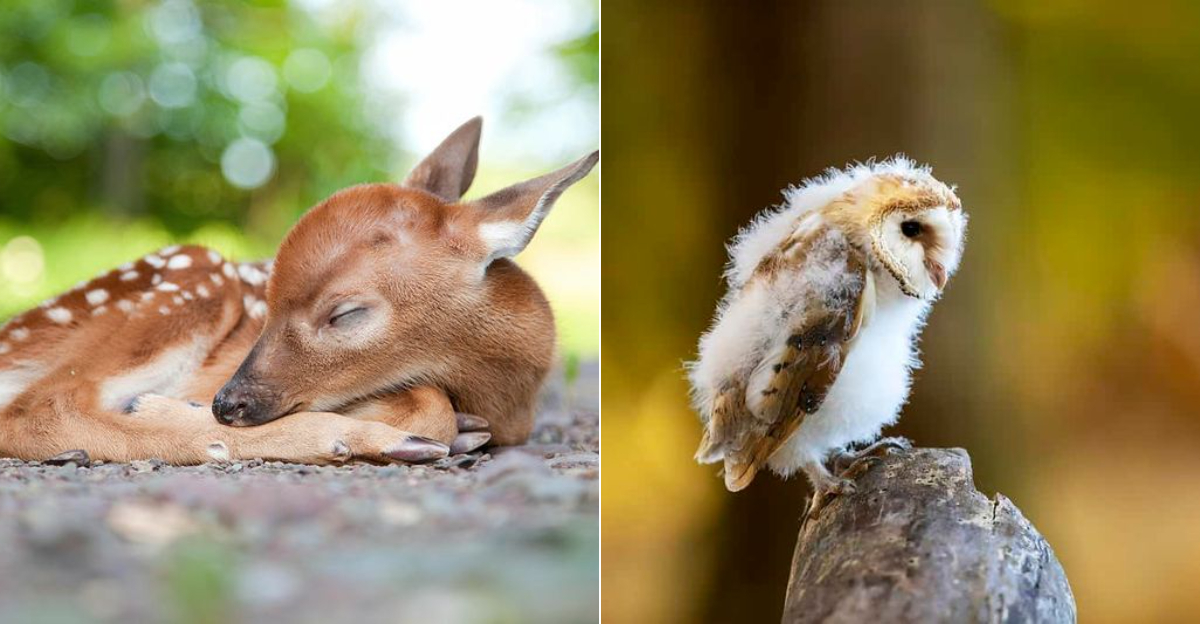There’s something undeniably charming about baby animals: they’re small, curious, and downright adorable.
Whether they’re playing in the wild or cuddling with their mothers, these tiny creatures have a way of melting even the hardest hearts.
In the U.S., we’re lucky to share the country with some of the cutest baby animals on the planet. Take a look at 10 of the most adorable baby animals in America that are sure to brighten your day!
1. Baby Sea Otters
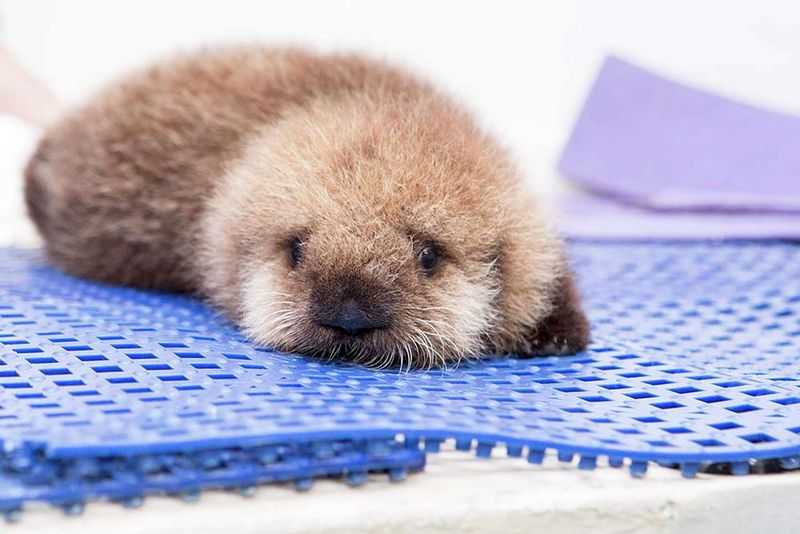
Floating on their backs like tiny furry rafts, baby sea otters might be the fluffiest seafarers you’ll ever encounter. Their dense fur (the thickest in the animal kingdom) keeps them buoyant and warm in chilly Pacific waters off California and Alaska.
Mother otters wrap their pups in seaweed to keep them from drifting away while they hunt for food. The devoted moms also spend hours grooming their babies, blowing air into their fur to create insulating bubbles.
With button noses, wide curious eyes, and paws they hold up like they’re constantly surrendering to cuteness, baby sea otters rank among America’s most photographed marine babies.
2. Baby Dolphins
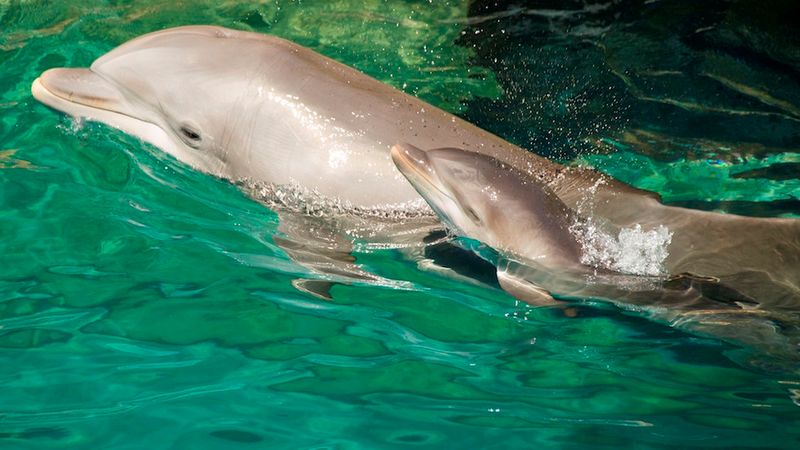
Born tail-first and ready to swim, baby dolphins (called calves) appear to wear permanent smiles that could melt the coldest heart. These marine marvels begin life with distinctive vertical stripes from their time folded inside mom.
Dolphin babies stick close to their mothers for up to six years, learning complex hunting techniques and social skills. They nurse underwater through specialized mammary slits and must learn to hold their breath while feeding.
Found frolicking in coastal waters from Florida to Hawaii, these playful calves perform acrobatic leaps and spins that seem to express pure joy, making them crowd favorites at marine wildlife tours.
3. Baby Pandas
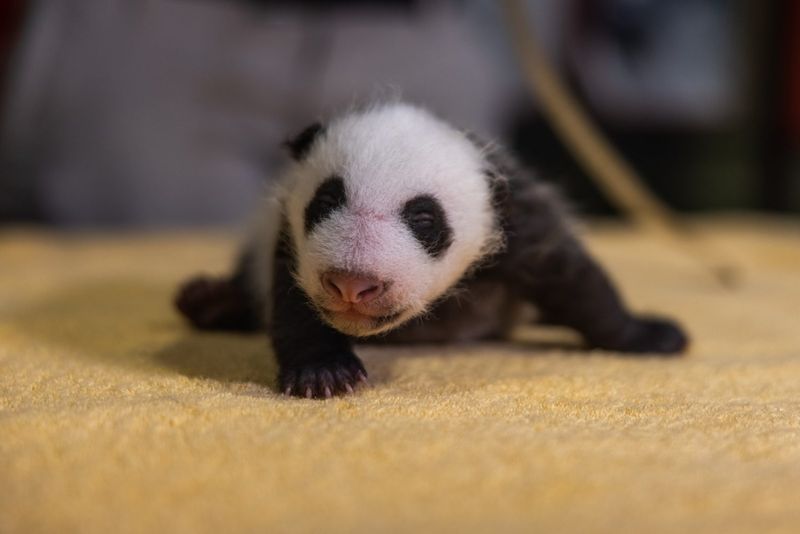
Weighing just 3-5 ounces at birth (about the size of a stick of butter) baby pandas are among the smallest newborns relative to their mothers’ size. Pink, hairless, and blind at birth, these rare treasures transform into iconic black-and-white furballs within weeks.
America’s panda cubs reside exclusively at specialized zoo conservation programs, with the National Zoo in Washington DC being a celebrated panda nursery. Their wobbly first steps and playful tumbles have crashed zoo websites when livestreamed.
The distinctive eye patches develop around 3 weeks old, completing their adorable disguise. Despite their cuddly appearance, pandas are technically bears, though these bamboo-munching babies couldn’t look less fearsome if they tried!
4. Baby Koalas
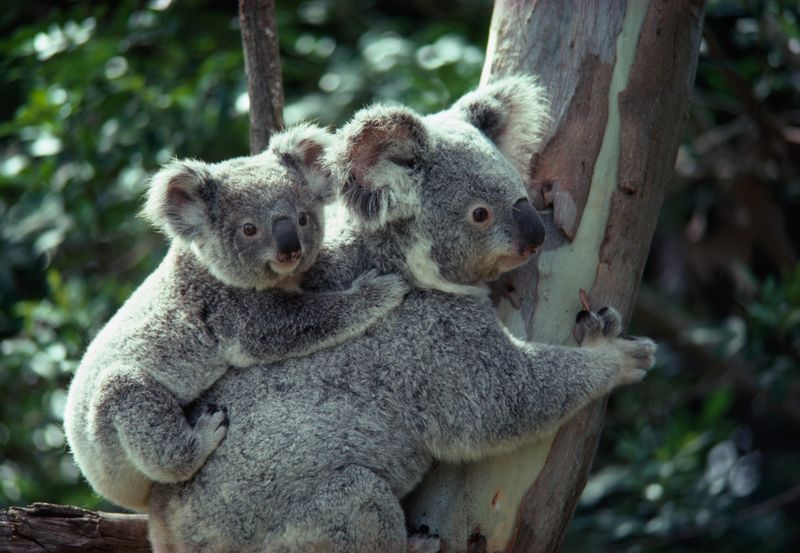
Technically not native to America but beloved in US zoos, baby koalas (called joeys) start life smaller than a jellybean! After birth, these tiny miracles crawl into mom’s pouch where they’ll stay for six months, attached to a nipple while developing from pink bean to fuzzy bear.
When they finally peek their round faces out of the pouch, their oversized ears and button noses cause spontaneous cooing from zoo visitors. Joeys ride on their mothers’ backs for another six months, occasionally poking their heads around to survey their world.
San Diego Zoo’s koala breeding program has produced some of America’s most photographed joeys. These mini eucalyptus enthusiasts develop their famous sleepy-eyed look early, spending up to 22 hours daily napping!
5. Baby Sloths
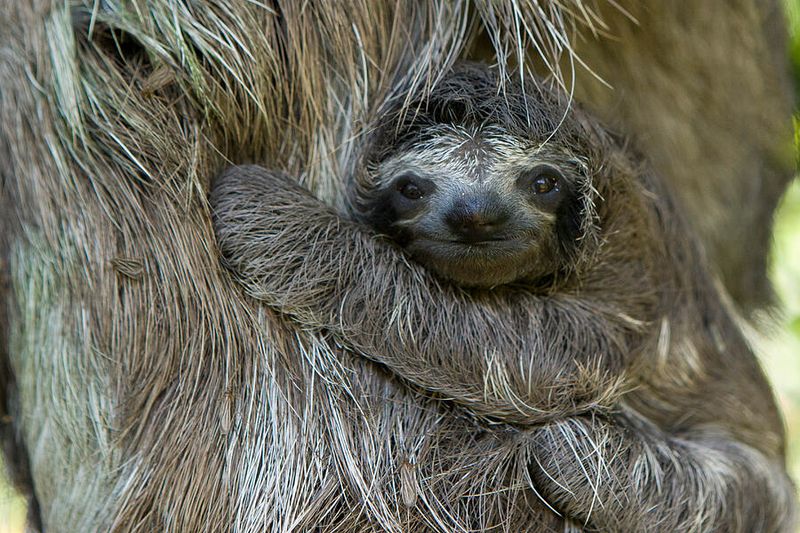
Hanging upside-down and moving at a pace that redefines ‘taking it easy,’ baby sloths embody peaceful contentment. These miniature moss-covered muppets cling to their mothers for nearly a year, wearing permanent smiles that make them look perpetually pleased with life.
Despite their sluggish reputation, baby sloths are surprisingly good swimmers. Found in wildlife sanctuaries across the southern United States, these little ones blink their round eyes with such deliberate slowness that every movement seems contemplative.
Their distinctive fur grows algae that gives them a greenish tint. With tiny arms always positioned for hugs and faces that look permanently surprised, baby sloths have become internet sensations for good reason!
6. Baby Hedgehogs
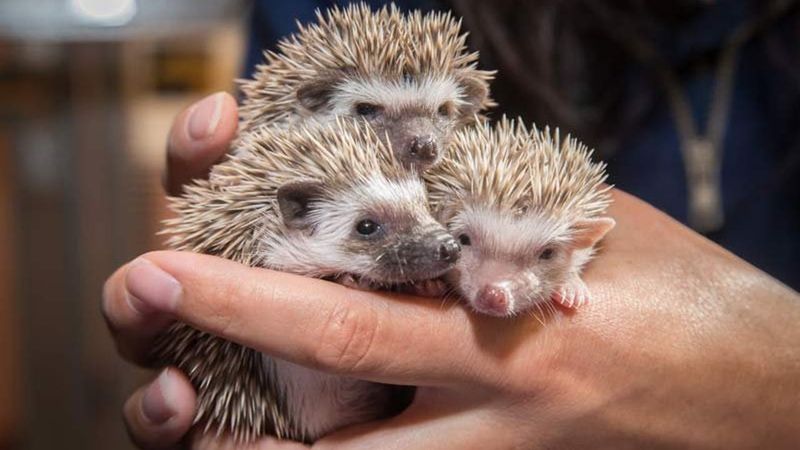
Baby hedgehogs (called hoglets) begin life with soft spines that harden within hours of birth. These palm-sized prickly potatoes have become popular exotic pets in states where they’re legal, charming owners with their curious snuffling and tiny pink tongues.
When frightened, hoglets curl into nearly perfect balls, hiding their vulnerable bellies and faces. Their first wobbly steps involve adorable stumbles as they learn to manage their top-heavy bodies balanced on surprisingly delicate legs.
Watching a baby hedgehog discover a mealworm for the first time (eyes widening before pouncing with all the ferocity their tiny bodies can muster) ranks among the most delightful wildlife moments you can witness in domestic settings across America.
7. Baby Owls
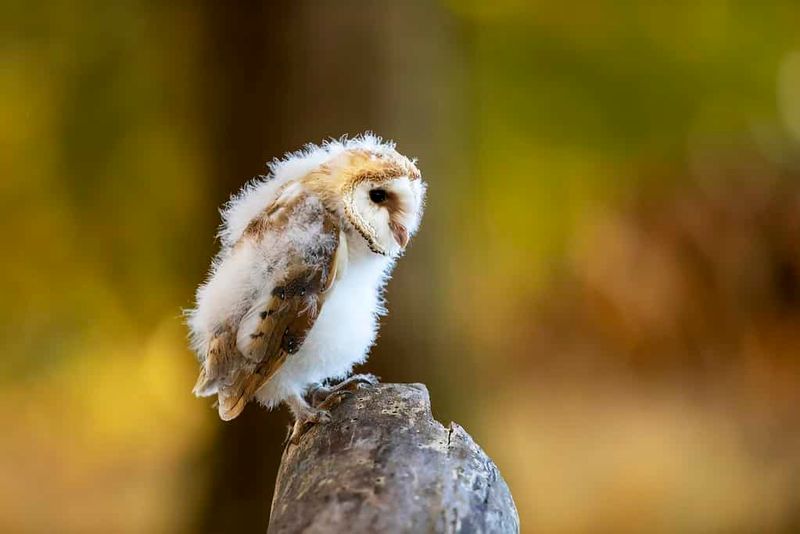
Covered in fluffy down that makes them look like disgruntled cotton balls with eyes, baby owls (called owlets) stare at the world with an intensity that suggests they’re contemplating the universe’s deepest mysteries. Their oversized eyes can’t move in their sockets, so they compensate with head rotations that can reach 270 degrees.
American forests host these feathered philosophers, who begin life as white puffballs before growing into their more recognizable adult plumage. Great Horned Owl babies develop their distinctive “ear” tufts gradually, looking increasingly like tiny professors as they mature.
Owlets make charming bobbing motions when curious: a behavior that has inspired countless viral videos from wildlife cameras. Their serious expressions paired with disproportionately large heads create an irresistible combination of wisdom and innocence.
8. Baby Deer (Fawns)
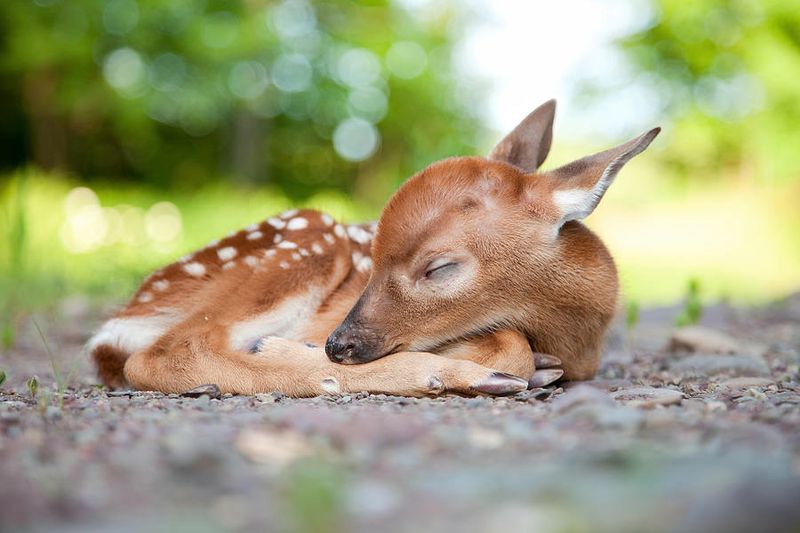
Nature’s perfect example of “don’t move, don’t speak, don’t attract attention,” fawns spend their first weeks lying motionless in dappled sunlight, their white spots blending perfectly with forest floor patterns. These delicate forest sprites can stand within hours of birth but are instructed by instinct to stay perfectly still when mom’s away.
White-tailed deer fawns across America’s woodlands have legs that seem impossibly long and thin, like they’re walking on stilts. Their enormous ears swivel independently, catching every forest sound while their noses twitch constantly, processing scents.
The moment a fawn first rises on wobbling legs resembles a newborn giraffe learning to walk. Their liquid brown eyes and pink noses have inspired countless children’s book characters and forest-themed nursery decorations.
9. Baby Raccoons
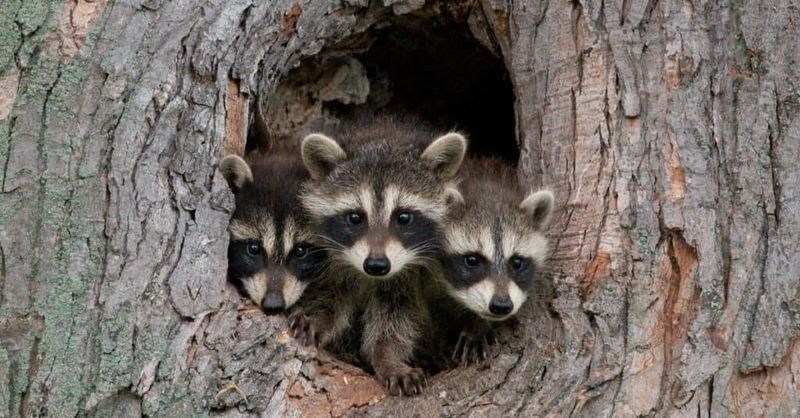
Baby raccoons (called kits) sport the famous black mask marking from birth. These dexterous troublemakers have front paws with remarkable sensitivity and grip that rival human fingers, perfect for getting into everything they shouldn’t.
Raccoon mothers raise litters of 2-5 kits in tree hollows or abandoned burrows across North America. The babies make distinctive chittering sounds when excited and perform adorable washing motions with their food, even without water present.
Their curiosity knows no bounds as they explore their surroundings with intense concentration, tiny masked faces serious with thought. When startled, they freeze in comically awkward positions, creating perfect wildlife photography moments.
10. Baby River Otters
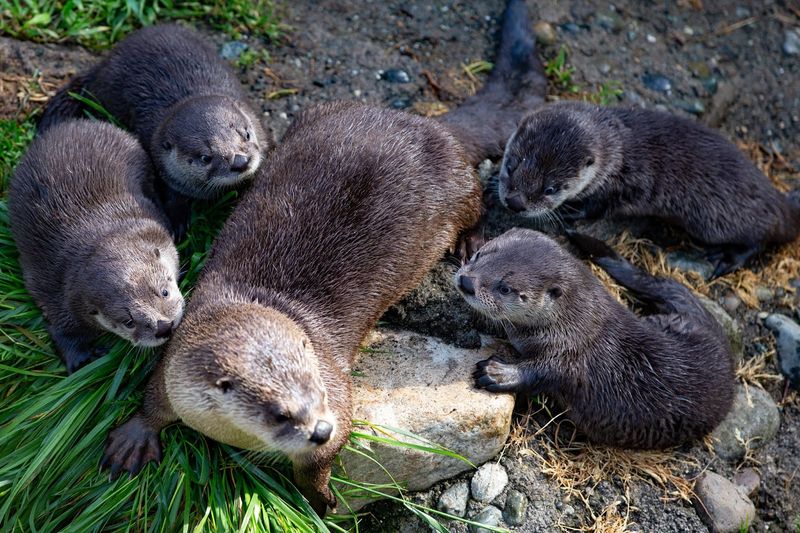
Distinct from their sea-dwelling cousins, baby river otters (called pups) are born blind and helpless but quickly develop into some of North America’s most playful creatures. These glossy-furred water babies learn to swim by being unceremoniously pushed into the water by mom—sink or swim parenting at its finest.
Found along waterways from the Mississippi to the Colorado River, otter pups spend their days sliding down mudbanks, wrestling with siblings, and practicing their fishing skills. They’re among the few animals that seem to play purely for enjoyment, chasing their own tails and somersaulting underwater.
Their webbed feet and powerful tails make them natural swimmers, while their whiskered faces with prominent whiskers give them an expression of perpetual surprise. River otter pups emit high-pitched squeaks that sound remarkably like giggling children.
